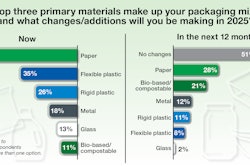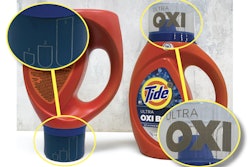Bottles in that category generally continue to be big and heavy, and perhaps that’s one reason for the decline in champagne’s popularity with consumers. But that appears to be changing, from the perspective of packaging material use.
The champagne industry has the objective of reducing the 200,000 metric tons of carbon dioxide it contributes to the environment each year, according to an article in the New York Times, producing and shipping accounts for nearly one-third of the bubbly’s carbon emissions, and the bulky bottle is a big contributor, the Times says.
Many of the changes, Philippe Wibrotte of the Comité Interprofessionnel du Vin de Champagne (CIVC) tells the Times, are being made discreetly, adding, “Much is done for the promotion of the environment, but it’s kept quiet because we want to make sure each step is perfect.”
The industry wants to reduce its carbon footprint 25% by 2020 and 75% by 2050. One effort next year in France will help send the champagne industry in the right direction. The CIVC wants champagne houses to use a new 835-gram bottle for the current grape harvest; the new bottles will appear in stores after three years of product fermentation. The goal is to trim carbon emissions by 8,000 metric tons annually.

























